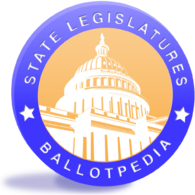Michigan state legislative special elections, 2015
In 2015, no special elections were held in the Michigan State Legislature. Three special elections were held in 2016 for three vacant seats. The following districts had a vacancy in 2016:
- State House District 75: The seat was vacant following Brandon Dillon's (D) resignation on August 3, 2015.
- State House District 80: The seat was vacant following Cindy Gamrat's (R) expulsion on September 11, 2015.
- State House District 82: The seat was vacant following Todd Courser's (R) resignation on September 11, 2015.
Breakdown of 2015 special elections
In 2015, the reasons prompting state legislative special elections were as follows:
- 38 due to appointment, election or seeking election to another position
- 14 due to a retirement
- 15 due to the incumbent accepting another job
- 1 due to an invalidated 2014 election result
- 1 due to a disqualification in the 2014 elections
- 9 due to a death
- 6 due to legal issues
- 3 due to moving
- 2 due to filling a remaining term
The partisan breakdown for vacancies were as follows:
- 42 Democratic seats
- 46 Republican seats
- 1 Independent seat
Note: This table reflects information for elections that were held and not total vacant seats.
| Partisan Change from Special Elections | |||
|---|---|---|---|
| Party | As of Vacancy | After Special Election | |
| Democratic Party | 42 | 38* | |
| Republican Party | 46 | 50* | |
| Independent | 1 | 1 | |
| Total | 89 | 89 | |
*In 2015, Democrats lost nine seats in special elections, but gained six seats. Republicans lost five seats in special elections, but gained eight seats.
*Although Edwin Gomes won election to the Connecticut State Senate as a Working Families Party candidate, after swearing in he was listed as a Democratic senator.
*Although Diane Richardson won election to the New York State Assembly as a Working Families Party candidate, after swearing in she was listed as a Democratic representative.
*Although Jay Mathis won election to the Mississippi House of Representatives as a Nonpartisan candidate, after swearing in he was listed as a Republican representative.
How vacancies are filled
If there is a vacancy in the Michigan State Legislature, the governor must call for a special election to fill the vacancy or direct that the vacancy be filled at the next general election.[1][2]
If the vacancy happens after the statewide primary election, the party organizations in the district select the party's nominee. The nominee must be voted on no later than 21 days after the vacancy occurred and at least 10 days before the general election.[3]
See sources: Michigan Const. Art. 5, § 13
See also
- State legislative special elections, 2016
- State legislative special elections, 2015
- Michigan House of Representatives elections, 2014
- Michigan State Senate elections, 2014
- Michigan House of Representatives elections, 2012
- Michigan State Legislature
- Michigan state legislative special elections: 2013, 2012
Footnotes
- ↑ Michigan Legislature, "Statute 168.178, Michigan Compiled Laws," accessed February 12, 2021
- ↑ Michigan Legislature, "Constitution of Michigan of 1963, Article 5, Section 13," accessed February 12, 2021
- ↑ Michigan Legislature, "Statute 168.634 (1)-(2), Michigan Compiled Laws," accessed May 22, 2014
| |||||||||||
 |
State of Michigan Lansing (capital) |
|---|---|
| Elections |
What's on my ballot? | Elections in 2025 | How to vote | How to run for office | Ballot measures |
| Government |
Who represents me? | U.S. President | U.S. Congress | Federal courts | State executives | State legislature | State and local courts | Counties | Cities | School districts | Public policy |

